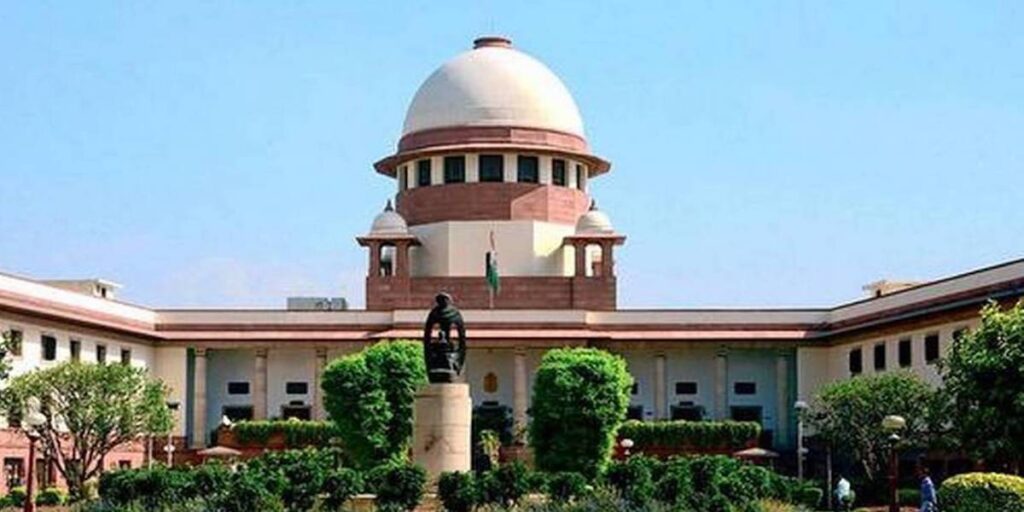Supreme Court’s avoidable overreach in the farmers’ agitation

The ongoing agitation involving a section of the farmers, mostly from Punjab, on the borders of Delhi has now brought the Hon’ble Supreme Court to the picture. Though the Court has not given its verdict and suggested the formation of a Committee of representatives of farmers, government and agricultural experts, it has asked the government whether it can wait in implementation of its newly legislated farm-laws till the Court hears every side after its winter vacation. This oral suggestion or observation is not exactly a stay- order of the controversial laws, but it is worth pondering over whether the Court should have interfered in an issue that is strictly a matter of governance involving the executive (the government), which is supposed to implement laws made by the Parliament (the legislature). The Court can, of course, come to the picture if there is a challenge on the legality of the laws, but that is not the case. Here the demand on the government is to withdraw the laws altogether, failing which the agitated farmers and their supporters, including the opposition parties are hell bent on crippling the normal life of the people of Delhi.
Is not a matter of judicial overreach by violating one of the basic features of our constitution – the phenomenon of checks and balances or separation of powers among the executive, legislature and the judiciary? The government, that is the executive, is accountable to the legislature as it must always have the support of its lower chamber (Lok Sabha). But judiciary is not at all accountable to either the executive or the legislature.
According to our constitution-makers, the Supreme Court had three main functions – “original jurisdiction” over disputes between centre and states, “appellate jurisdiction” (the highest court of appeals), and “advisory jurisdiction” when the President seeks specific advice on apparent ambiguities regarding the interpretation of a clause of the Constitution.
However, the Supreme Court of India grew considerably in power and stature since mid-1980s when justifying why “Supreme Court of India should become Supreme Court of Indians”, it tried to expand ‘access’ to justice through what are known as Public Interest Litigations (PIL). It all started with landmark S.P. Gupta vs. President of India and others judgment, in which Justice P.N. Bhagwati, the key architect of PIL, relaxed the locus standi, and opened up the doors of the judiciary to public spirited citizens – both those wishing to espouse the cause of the poor and oppressed and those wishing to enforce performance of public duties.

PIL heralded the era of what is said “judicial activism” in India. Through PIL, the court creatively expanded, Fundamental Rights, especially Article 21, to cover the right to live with human dignity, the right to livelihood, the right to education, the right to health and medical care of workers, and the right to healthy environment. In the process, the court has entered itself unto the shoes of executive branch. For instance, it has granted compensation to the victims, passed orders to rehabilitate bonded labourers, issued directions to rickshaws to rickshaw pullers and to prevent them from unemployment, issuing guidelines to check environmental pollution. And now the court is open to the idea of adjudicating whether the government or the parliament has the authority to legislate laws on certain issues such as agriculture. The very fact that it is talking of a committee to look into the farming issue, the Court is implying that the Parliament is not the best place to frame laws of the country.
In a significant judgment in Vineet Narain vs. Union of India court used ‘continuing mandamus’ to give government a series of policy directions including conferment of statutory status to Central Vigilance Commission, manner of their selection, tenure and other nitty-gritty of executive job. In the similar manner of asserting its power of “judicial review”, the Court in recent years has passed orders and formulated guidelines on issues of social welfare, environment protection, electoral reforms etc.
In the process, the Court seems to be not worried about its principal function of rendering justice, which is one of the slowest in the world, given lakhs and lakhs of pending cases in the country. We also see the delays in registering cases and rise in misplaced case records in our lower courts. Similarly, we see how the delays in justice are caused due to the lawyers seeking unnecessary processes and repeated adjournments, and the judges granting their wishes. And we see how much time our higher judiciary takes in attending to PILs that habitual petitioners and legal practitioners bring, despite the facts that most of them are not genuine and meant essentially for settling political scores, gaining easy publicity or fulfilling private interests.
Judiciary in a democracy should also not use PIL as a device to run the country on a day-to-day basis or enter the legitimate domain of the executive and legislature. The entertaining of such frivolous public interest litigations is nothing but a trivialisation of the justice system, even if it assures the judges dealing with them it the limelight.
The Court also needs to make genuine procedural changes to discourage the prioritisation of a few high-profile cases as dictated by a select group of high profile lawyers and fix timelines for submissions by litigants.
However, purging all the above malpractices, which indeed will be real judicial reforms in the country, is essentially the task of the judiciary itself. The purge of malpractices has to come from within. If the judges can appoint themselves in India (a system that does not exist in other democracies), why cannot they be equally sanguine in judging in their own cause?



Many a CJI when returning advise a cut off line on appellate jurisdiction and PILs between SC and HCs, so as not to overburden the SC. Law Commissions too have made such recommendations time to time. So who will bell the cat!